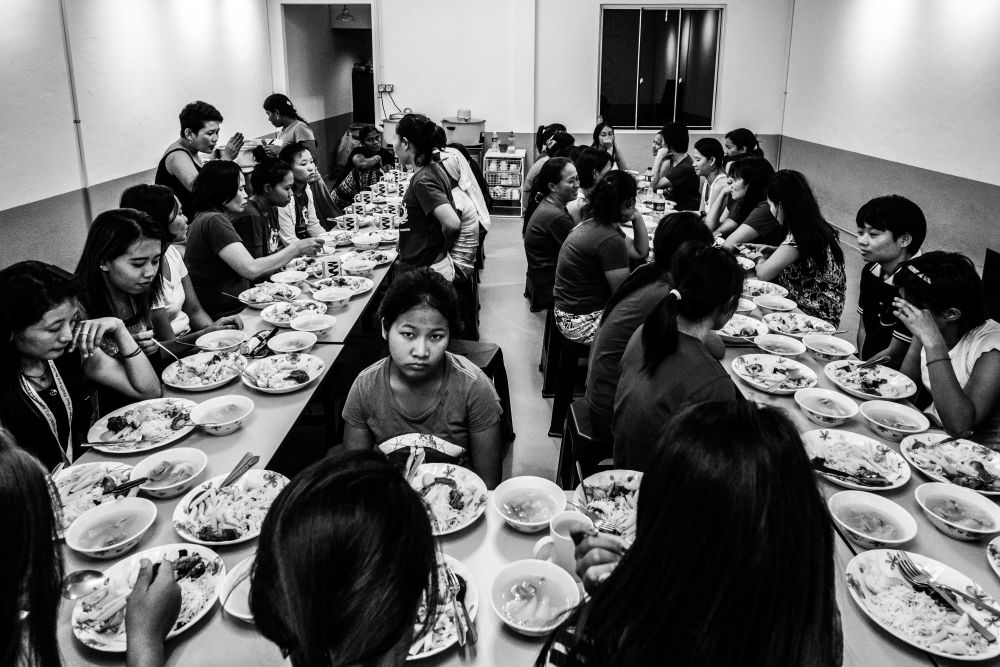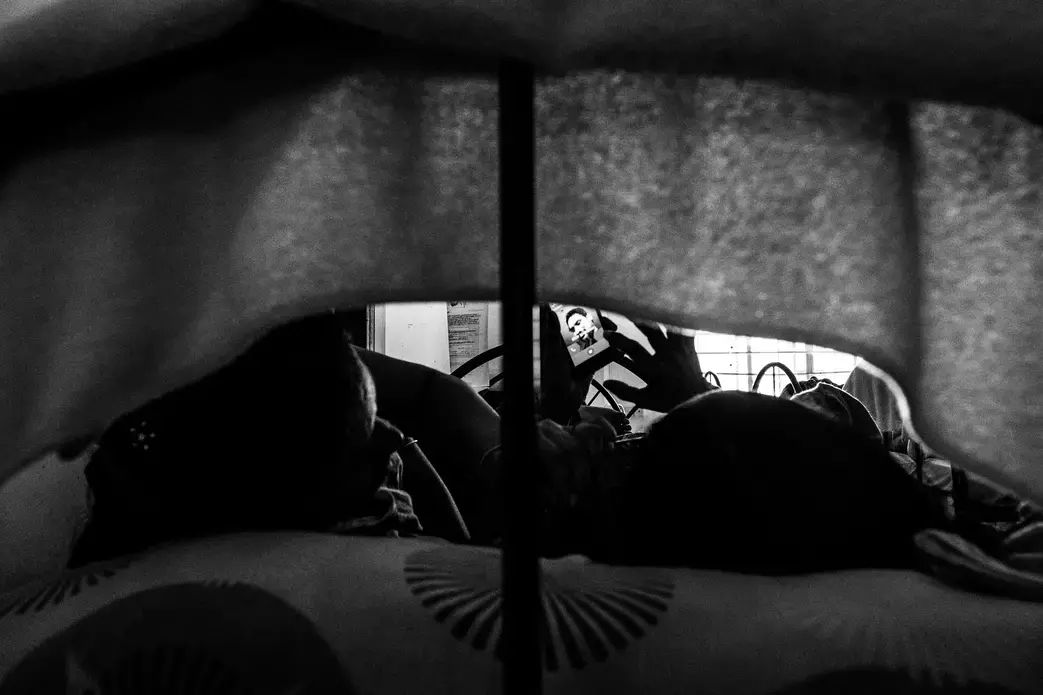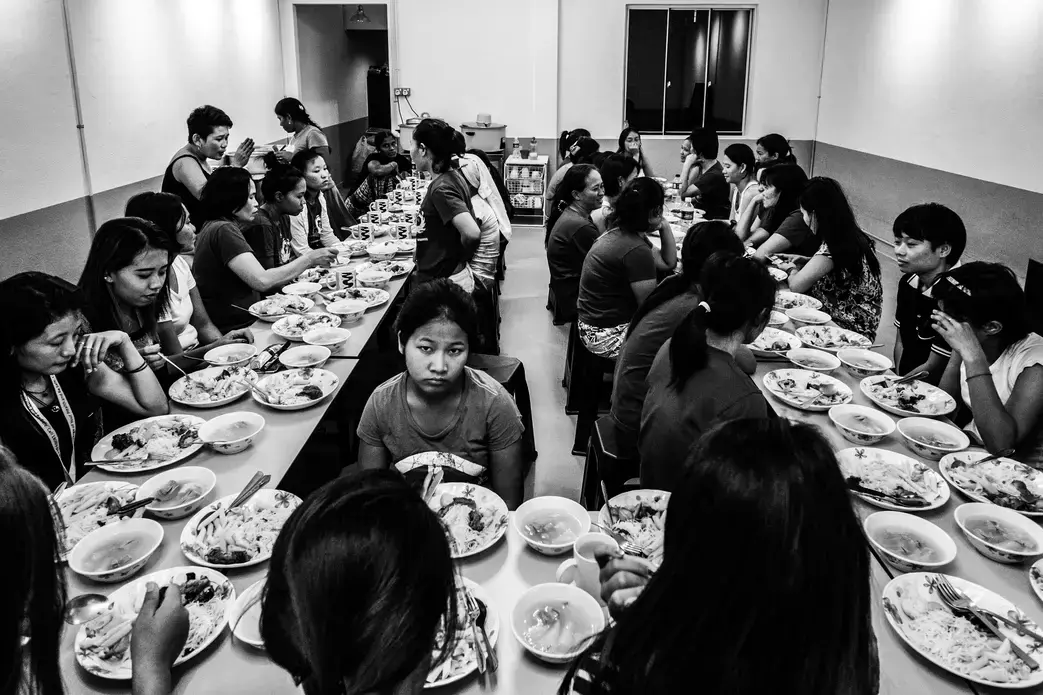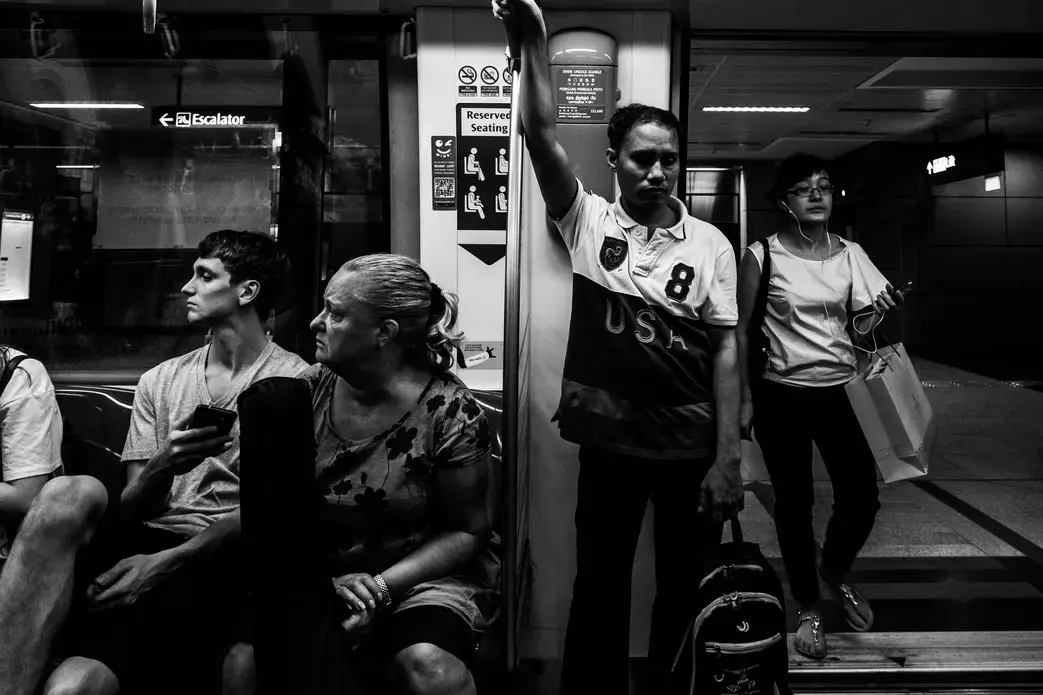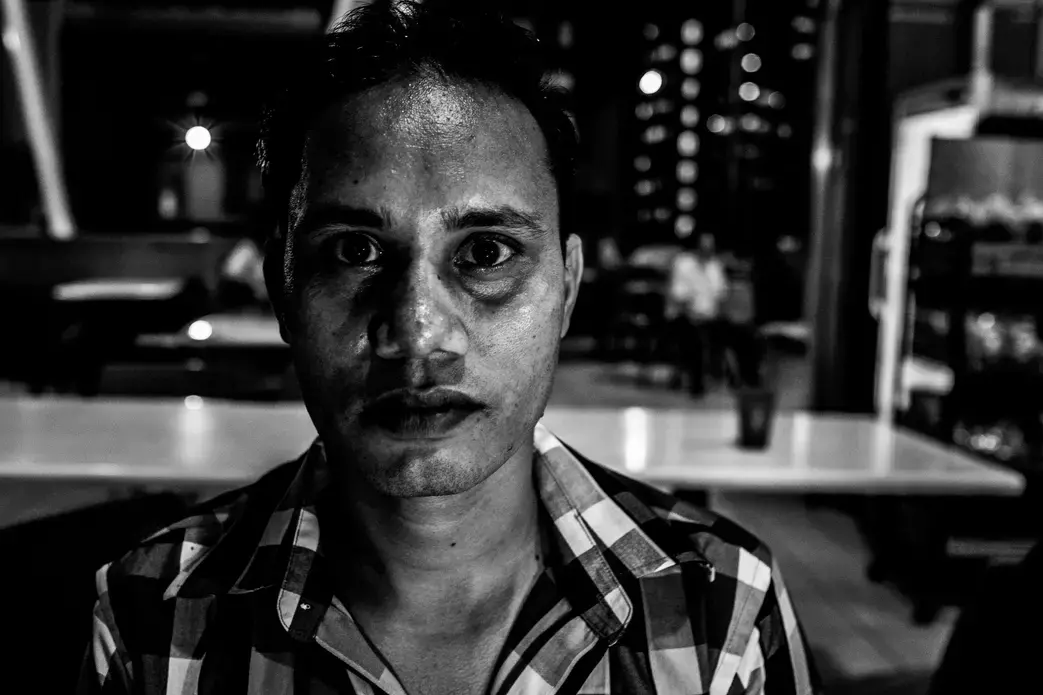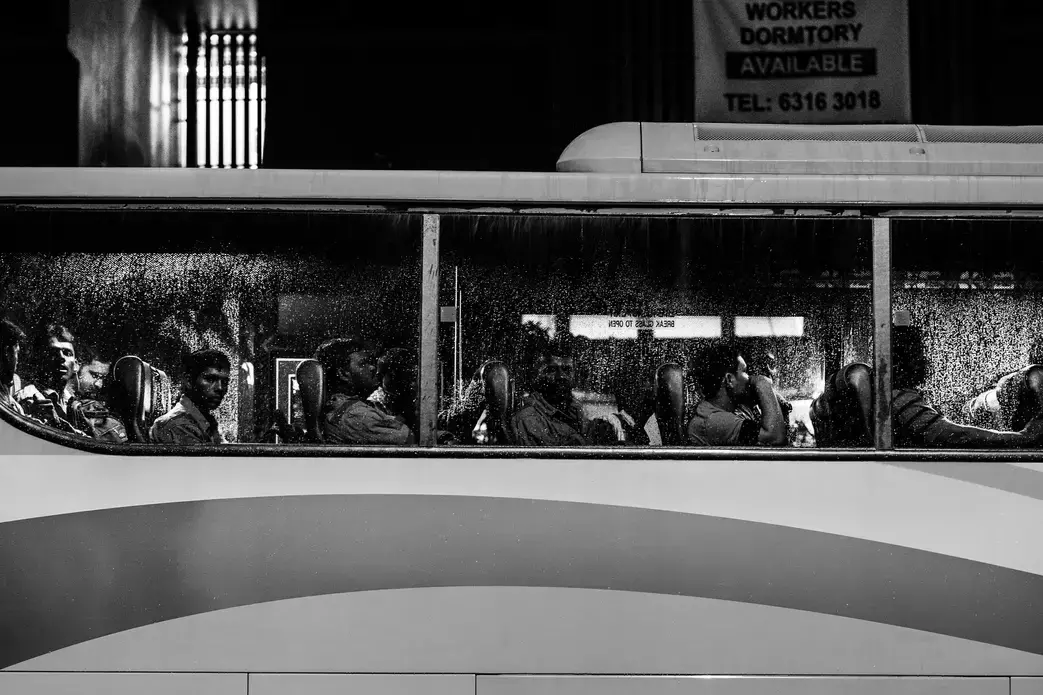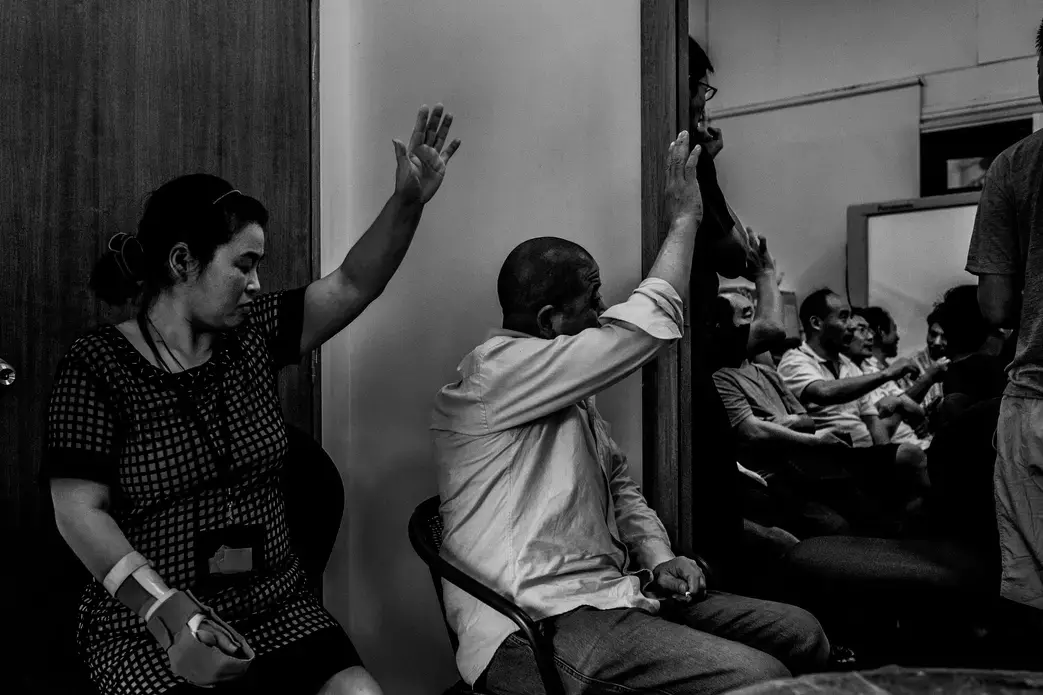When Xyza Bacani first tried photographing migrant workers at a Singapore shelter for women who had fled abusive employers, the man in charge was not interested. He told her of previous experiences where journalists stayed barely long enough to get the photo, and that they did not really care about the women.
But Xyza wasn't like those other photographers. Her mother had been trafficked to Singapore as a domestic worker in 1996 and has worked for a wealthy woman in Hong Kong for the last 19 years. Xyza — only 8 at the time — was left to care for her younger siblings in their rural village in the Philippines. Xyza followed her mother's path and became a domestic worker in the same Hong Kong household for seven years.
Her own story opened the door to the shelter. Once inside, she forged deep connections with the women who lived there. She had been one of them. She saw them.
"Migrant workers are invisible people," Xyza said. "We are like air. People need us but they don't see us. We exist to please them, to serve them, but they don't really see us as part of the society. We have voices — it's just that no one is listening."
Xyza has dedicated the last three years to documenting the plight of illegally trafficked workers in Hong Kong and New York, making sure their stories are told and their voices are heard. Last year, she turned her attention to Singapore, where her mother first worked.
There is one question that she is always asked by the women she photographs: How did you feel about your mother leaving you to be a migrant worker and growing up without her? While she collects their stories, Xyza shares her own journey:
Her mother, Georgia, who only has a sixth-grade education, was the village washer woman. One day, a recruiter came to town promising a lucrative job in Singapore that could lift the family out of poverty. Her mother left Xyza to care for two younger siblings while their father, Villamor, worked construction jobs and was home only on weekends.
Georgia was illegally trafficked into Singapore on a tourist visa, but there was no job waiting. She was held in a small room with 10 other Filipino women and not allowed to leave. After four days, an employer picked her out of the group and brought her home. She said she was treated poorly, to the point that she was only allowed to go out 3 times in the first two years. Georgia fled Singapore and found employment in Hong Kong working for an affluent woman who was kind to her.
Back home, Xyza essentially grew up without a mother, since Georgia only visited for two weeks every other year. All she had of her mother were photographs she sent home depicting what seemed like an extravagant lifestyle. Xyza did not know her mother well and "always had the feeling she left me for money and good food and was having a good time," she said, while Xyza took care of her siblings.
"I always tell migrant workers that it is really important to tell their children the real situation," Xyza said. "To tell them that you're not here having a great time, but that you are working for their future."
Xyza was 19 when she decided to go to Singapore, too, so she could help her younger siblings get an education. Her mother urged her not to go because of her own bitter experiences there and instead asked her to join her as a domestic worker in Hong Kong, where they worked side by side for the next seven years.
"It took us four years to mend the relationship and for me realize that she never did anything for herself because she was saving money to send to me and my siblings," Xyza said. "I found out it was hard to be a migrant worker."
After several years, Xyza started taking photos on her day off. They were, she said, for her mother's benefit, since Georgia rarely ventured outside her neighborhood. Xyza turned out to be a talented street photographer, and her work caught the attention of fellow Filipino photographer Rick Rocamora, whose enthusiastic mentoring led her to be featured on Lens in 2014. She soon turned her attention toward women who had been trafficked in Hong Kong. In 2015, while she studied as a Magnum Foundation Human Rights fellow, she photographed women who had been trafficked as domestic workers in New York.
Last year, she began a hard look at Singapore, where her mother's journey as a domestic worker started.
"Singapore is really beautiful physically and economically successful, but underneath that are these migrant workers," she said. "It costs a lot of money for migrant workers to go there and then they are tied to these contracts and cannot find any other employment."
There, she discovered that the wearying toll of illegal trafficking, sexual and physical abuse, and unscrupulous employment agency practices leads many migrant workers to run away.
After documenting the women's shelter, Xyza broadened her coverage by photographing Southeast Asian men who toiled as migrant laborers in the booming construction industry. Their stories echoed Xyza's father's experiences as a migrant construction worker in Saudi Arabia 25 years ago. When her father's employer refused to let him leave after his two-year contract ended, he fled and returned to the Philippines.
Xyza zeroed in on Sohag Faslul Haque, a Bangladeshi man who was injured at work and was trying to navigate the government's complicated workers' compensation system. She also produced another photo essay on three Chinese workers who had been injured while working in Singapore but banded together to help each other through their ordeal.
All these stories remain important to her, not just to tell the world of the ordeals faced by the migrant workers, but to show that one-time migrants like her can go on to make a difference.
"It makes them hopeful that they can be somebody else or their children can be somebody else," she said.
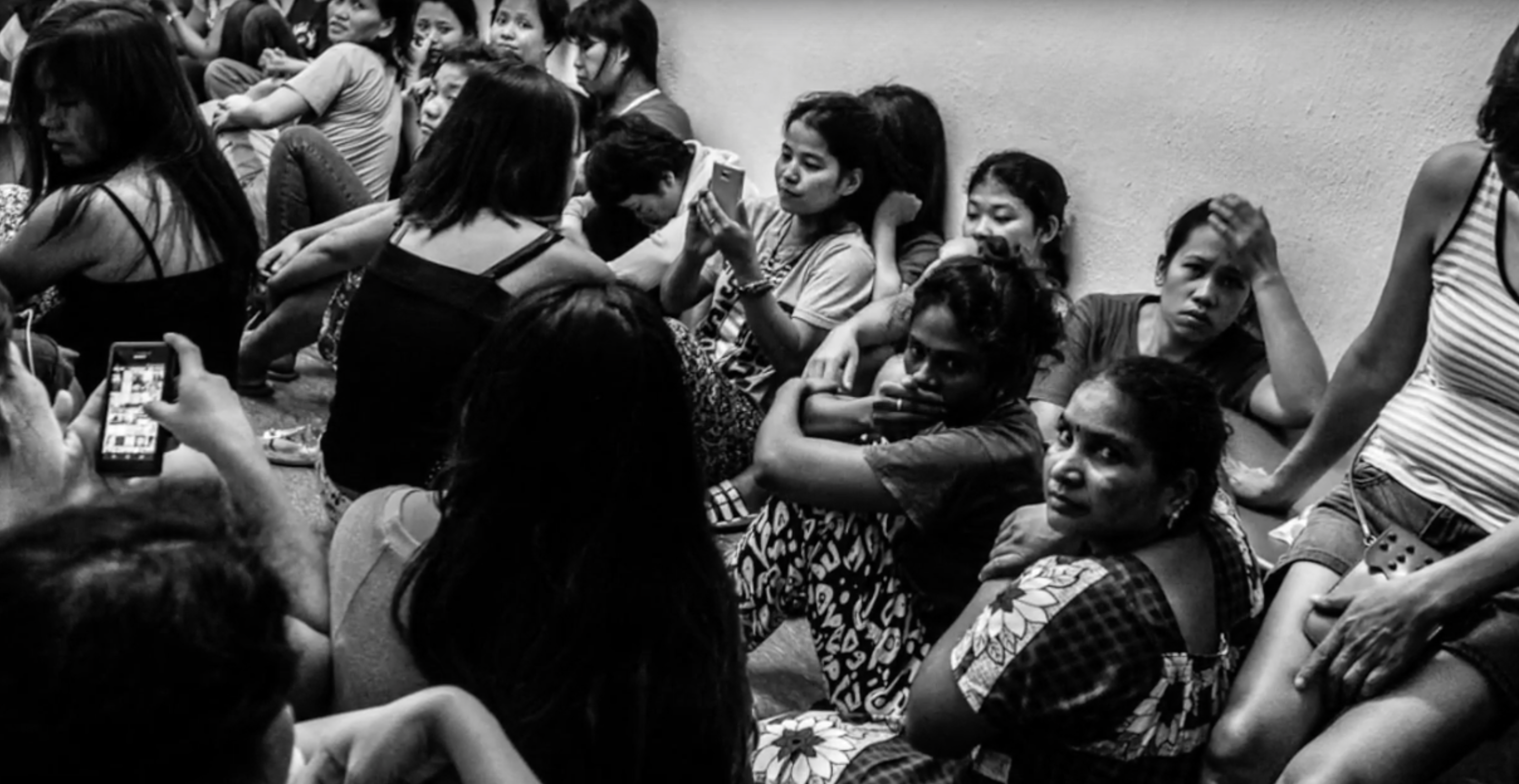
Education Resource
Meet the Journalist: Xyza Bacani
In this video, Xyza Bacani discusses her motivation behind her story on migrant workers who run away...


